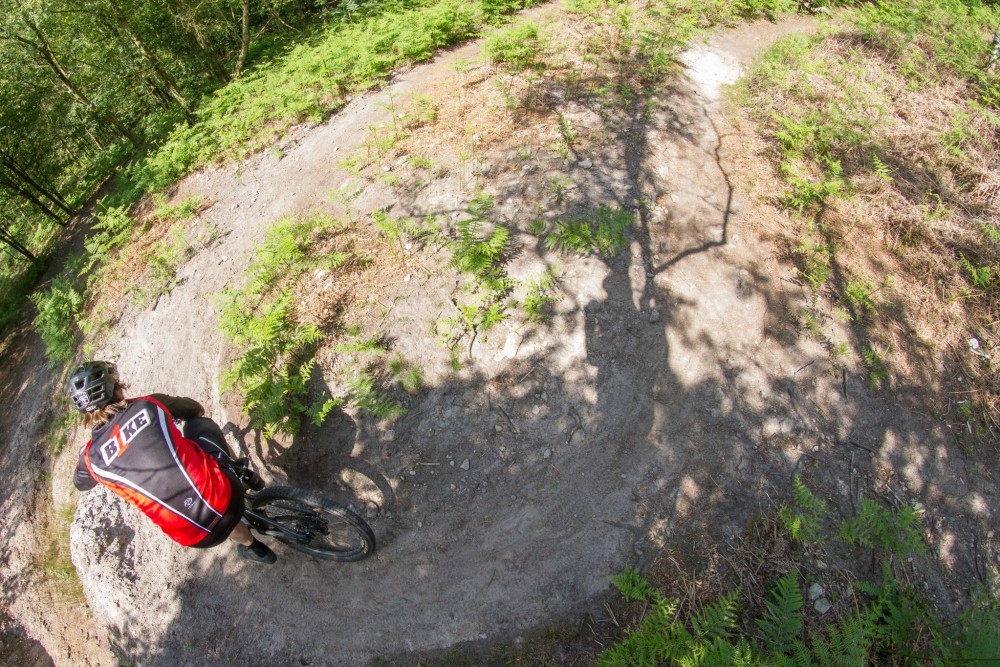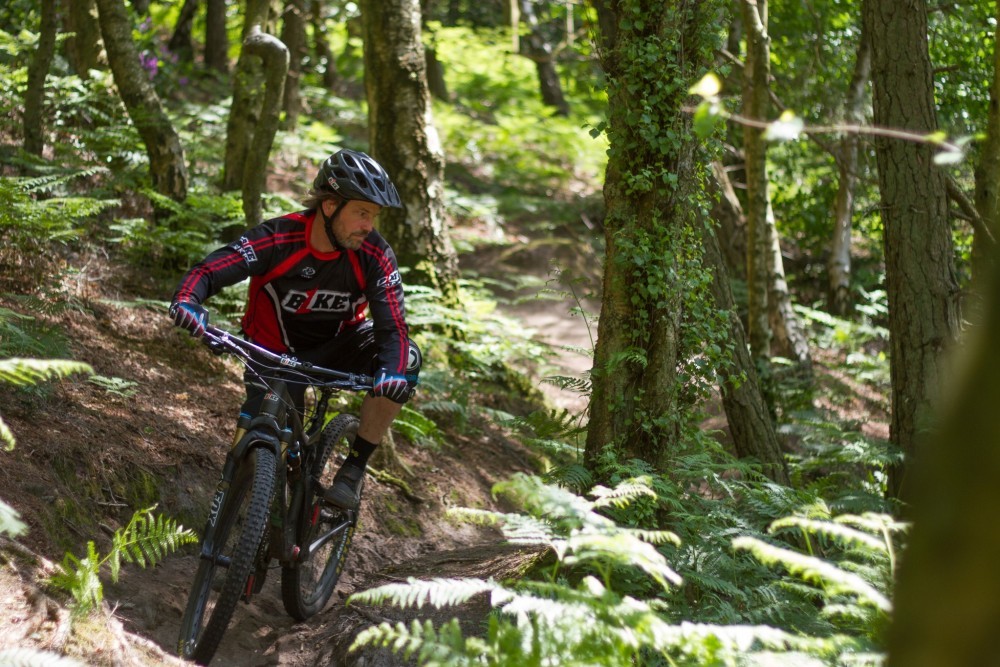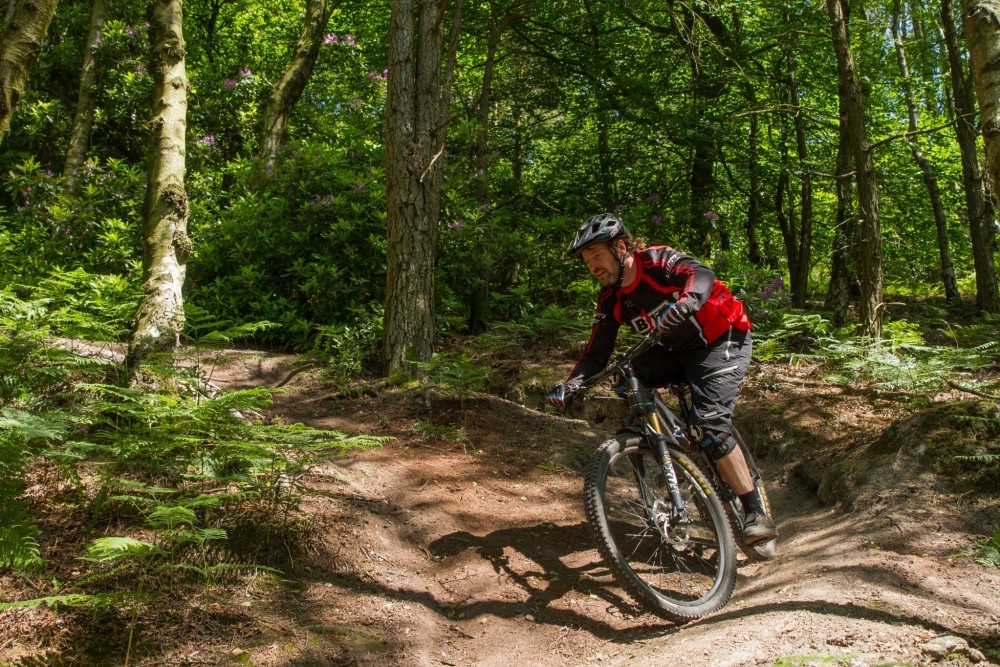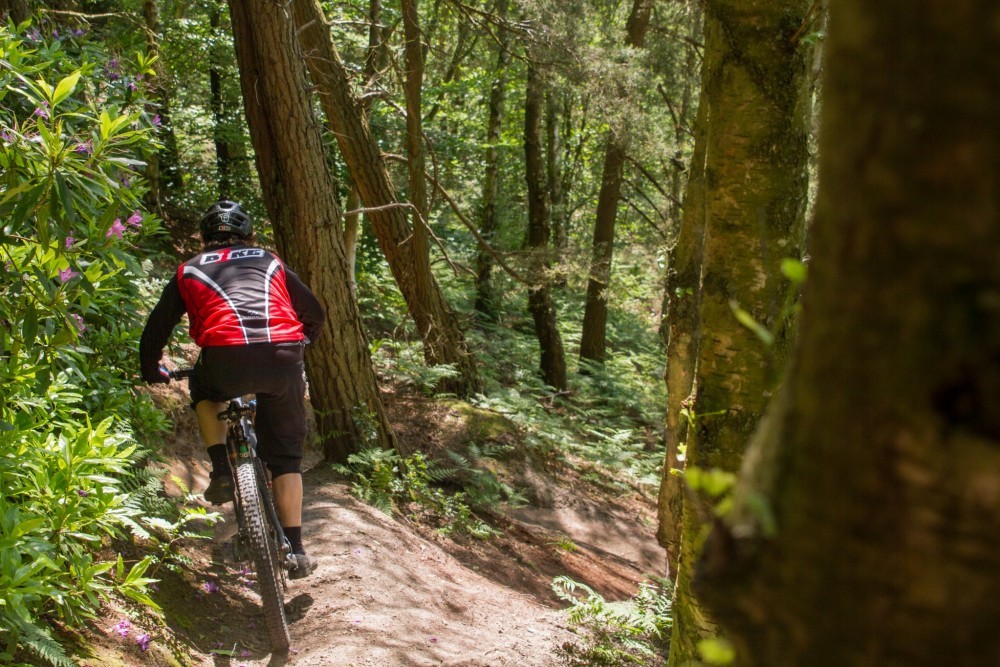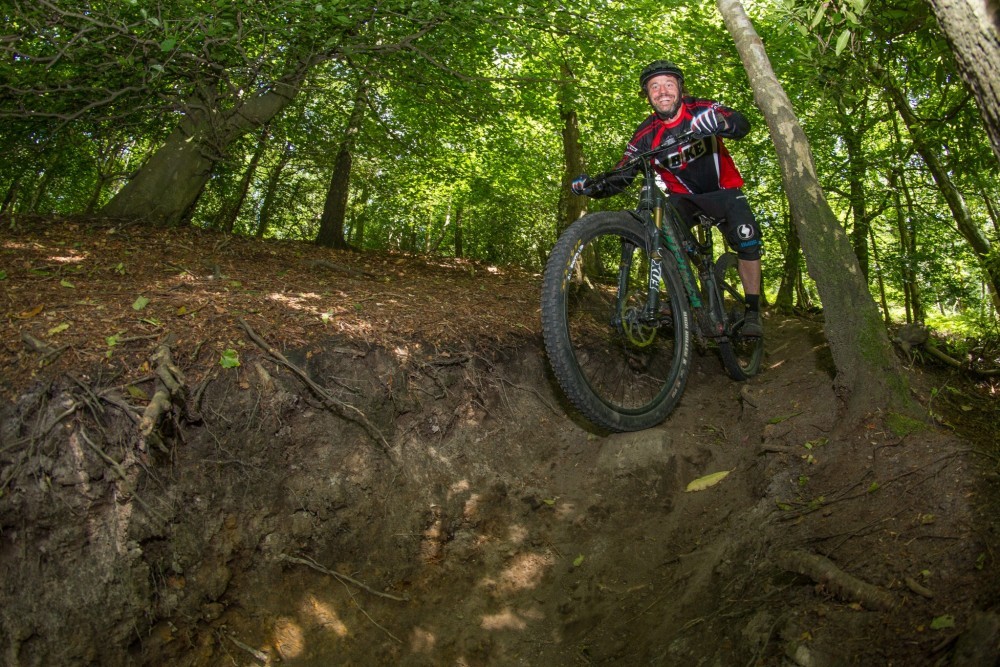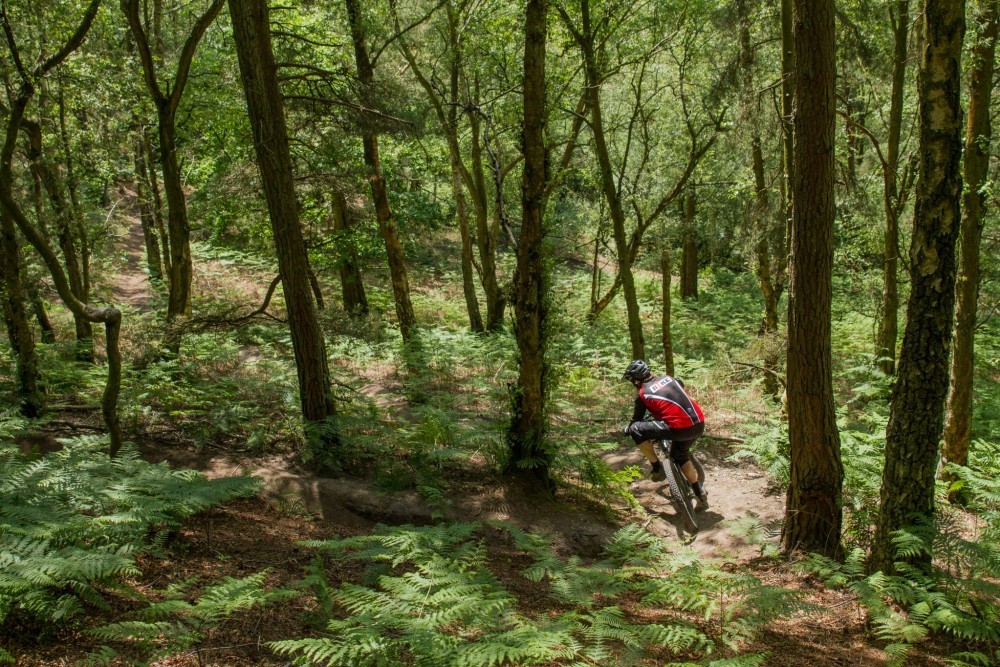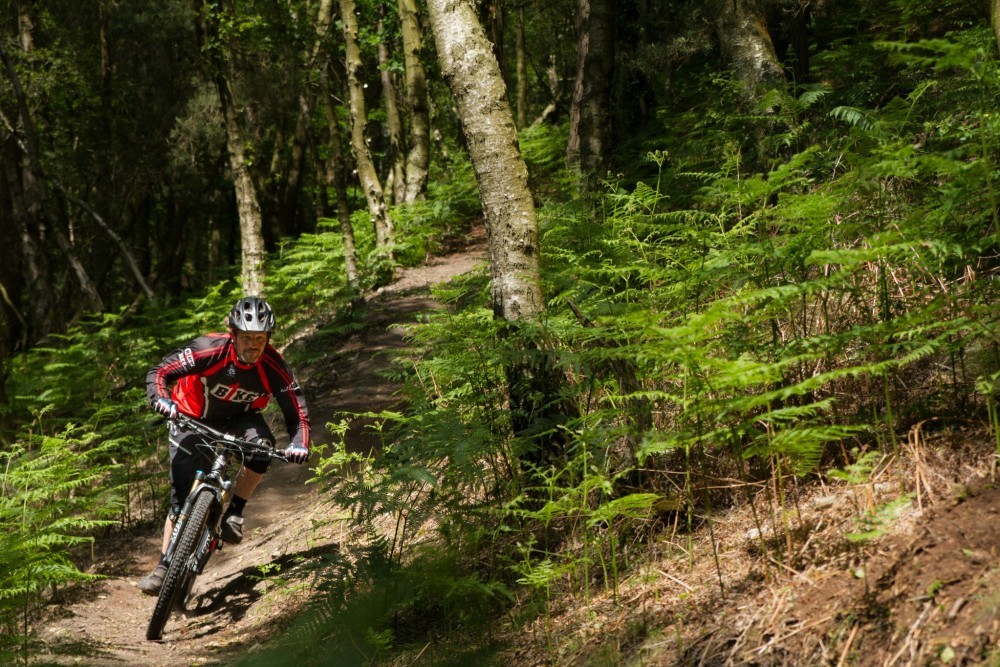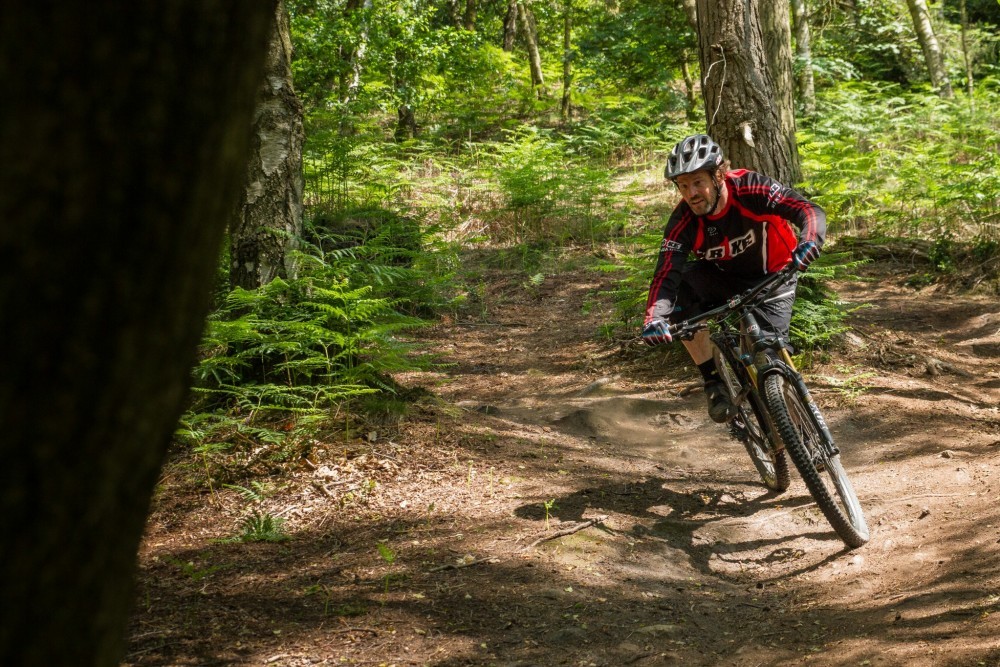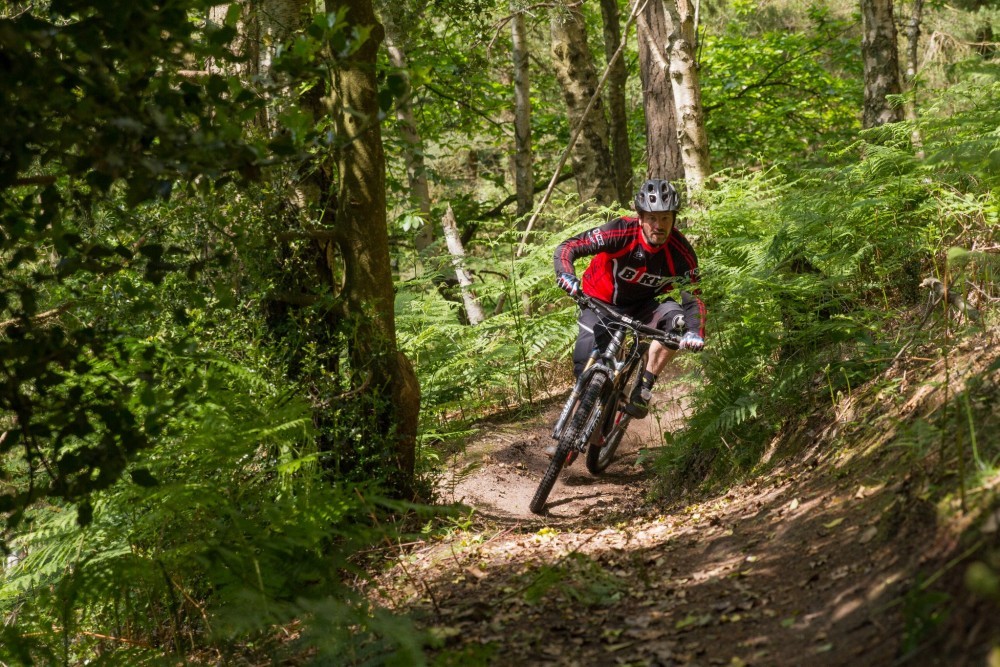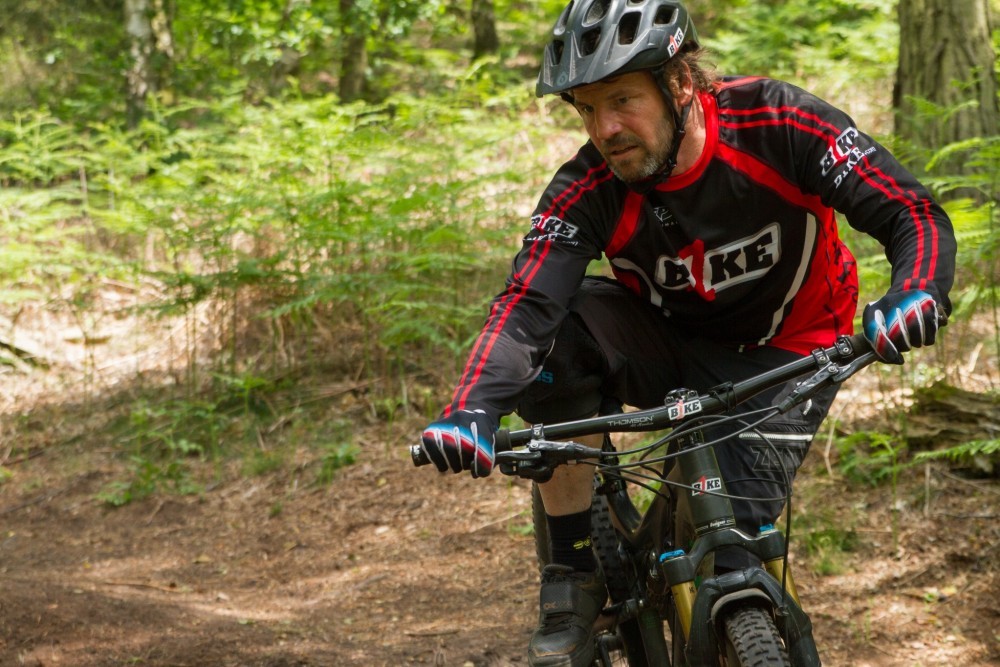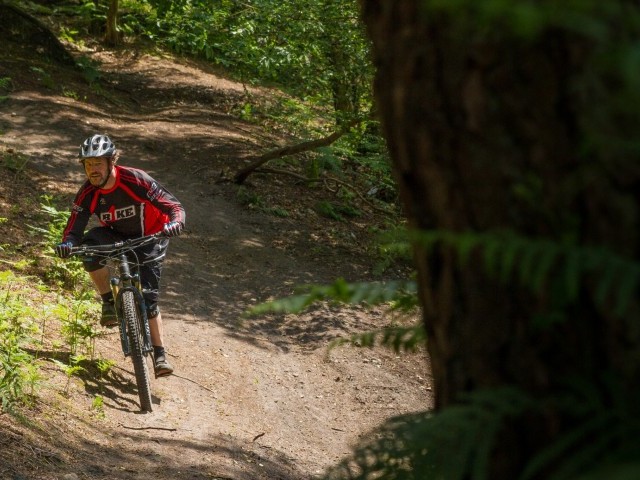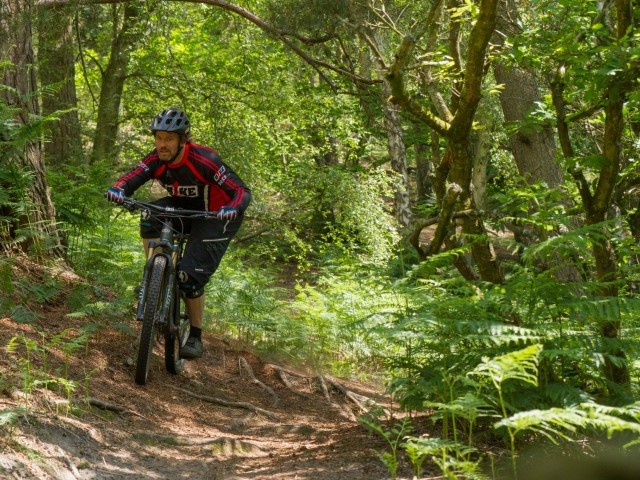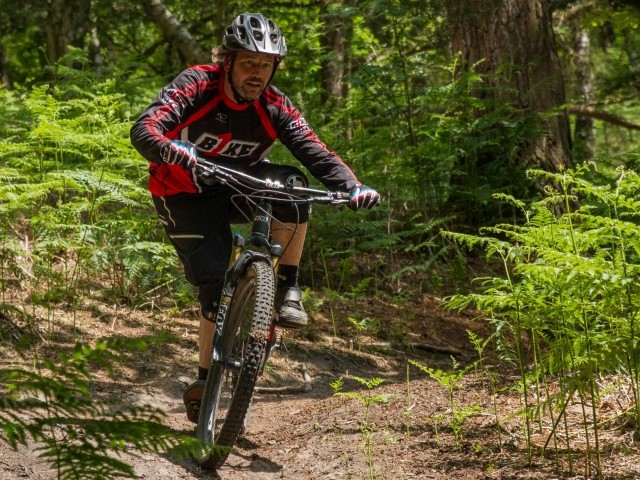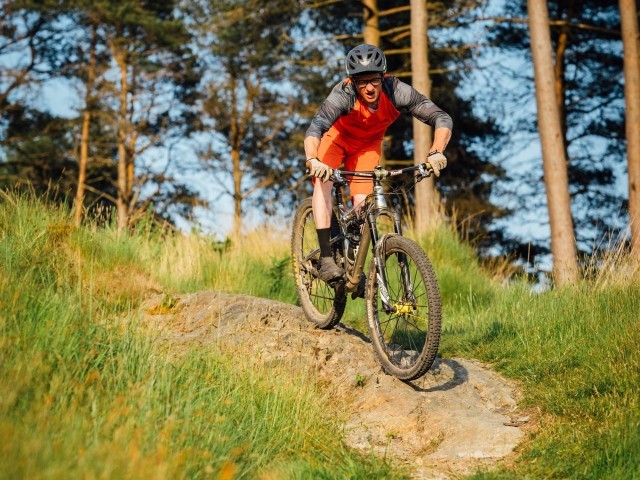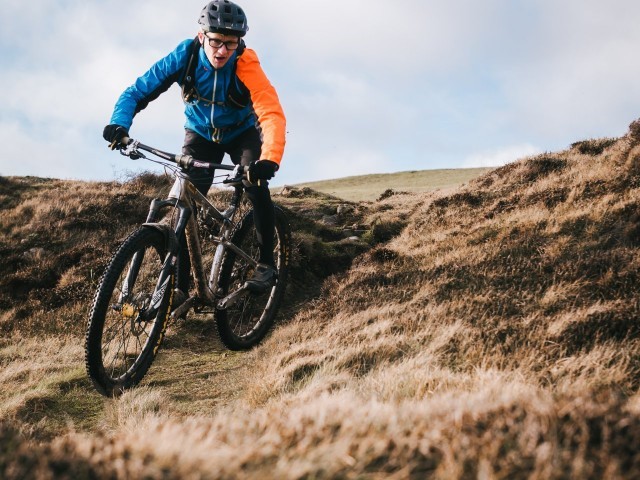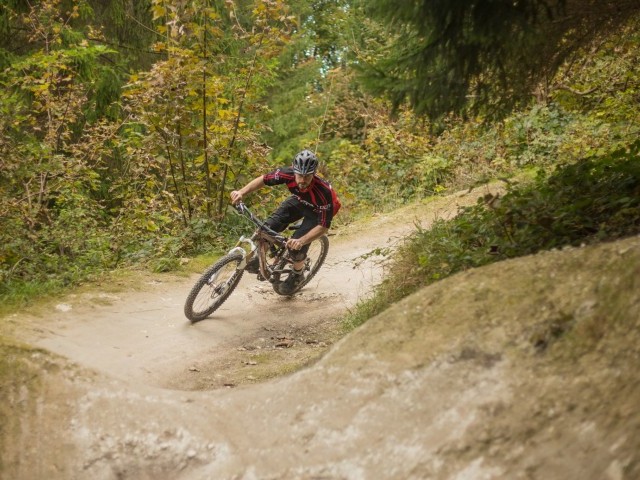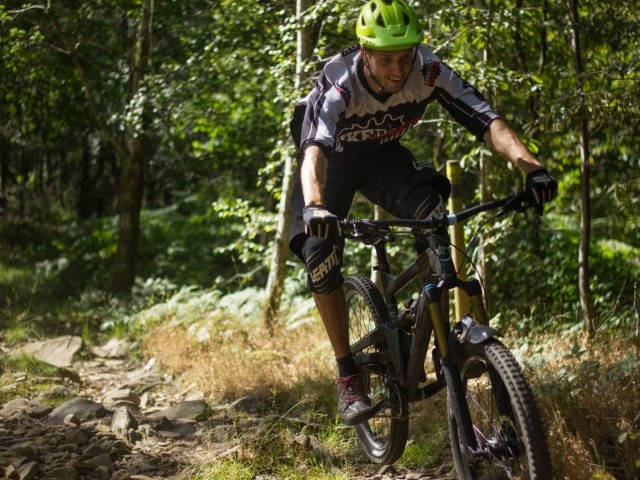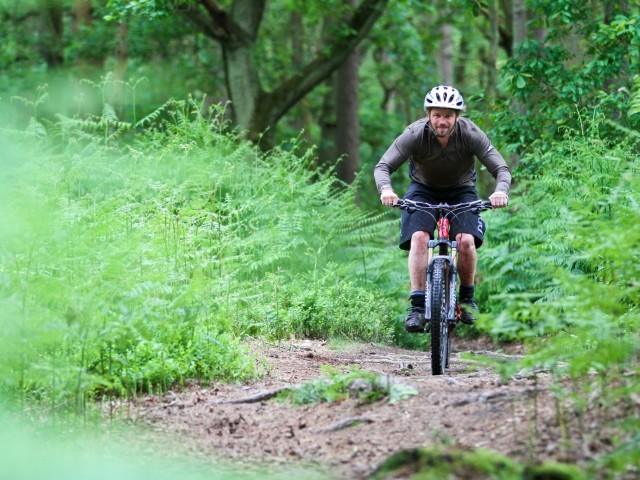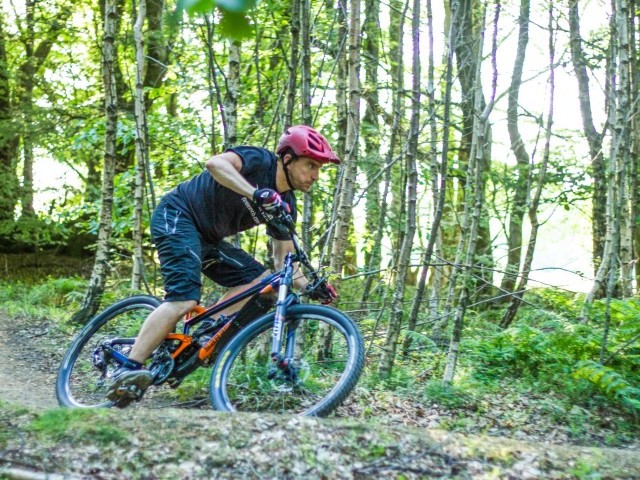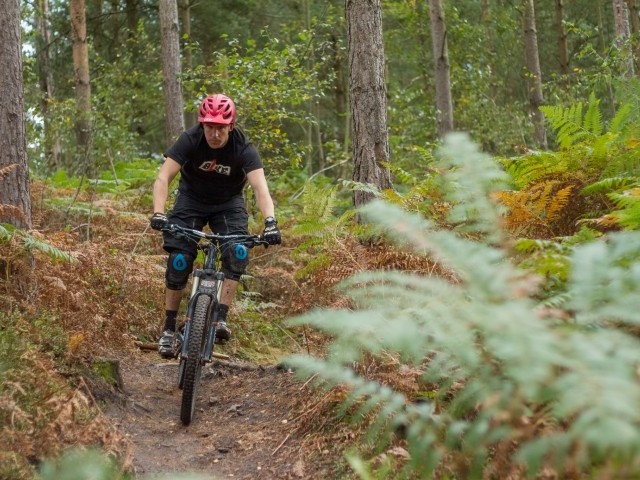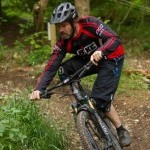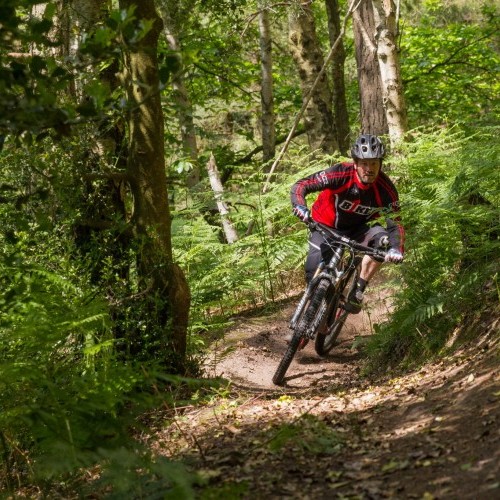
Switchbacks
Technique / Terrain
Introduction
Switchbacks are a trail feature that has been long forgotten in the new world order of trail centres and cultured MTB parks. Old school riders and those who enjoy getting out into the back country will know them all too well, but the new breed of riders born and bred at the trail centre will find them to be a tricky obstacle when they encounter them in the wild. This issue we give you the tools you need to tackle them with speed and style, and to turn them from a nemesis into a trusted friend!
Berms may have become much the favoured option when it comes to turning about face in parks and trail centres, but in the state of nature things are not so simple. Mountain tracks that predate the two-wheeled revolution are more likely the result of cloven hooves than Kubota swing shovels. Although they may prove more challenging, mastering switchbacks can be just as rewarding as railing berms.
There is of course a whole bundle of joy in creating big G's by swooping round a well-crafted berm. To tame trails in the wilds of nature however, ride fluidly and create flow where the trail was eroded into existence, rather than designed as a mountainside BMX track, gives a whole different level of satisfaction.
If you head out of the park on your annual pilgrimage to bigger mountains this year and into more natural terrain, the art of riding switchbacks is a technique that you will be glad you packed.
Although, in essence, it is just another type of corner, the skills we apply to a flatter corner with a wider radius, or indeed a sublimely crafted berm, need to be somewhat refined and polished.
Understanding the physical skills is just one aspect of taming more rugged, design-free trails. Switchbacks can really challenge the mental skill set and combine all three types of 'performance cue' that we have identified, in an often steep, melting point of technicality.
More rapid gradient loss, on looser, less consistent surfaces, where apexes are tighter and later, all combine to intensify the process of changing direction. Training your body and mind, understanding not just the 'how to', but the 'why to', you too can keep on track without the support of a berm. Combine good technique and keep a level head and you might just find that Golden Thread.
Whether we are riding up or down them, switchbacks have the potential to mess with our skill set a little. Understanding why they present the challenge they do will help develop the skill set to master them.
In physical terms, a switchback is a far tighter corner and thus there is more to do in a shorter section. Although a short section, by comparison to many that you may identify as you ride a trail, switchbacks can be especially 'noisy'. It's easy to let 'performance cues' distract you at a time when bandwidth of the brain is limited. It is easy, as a rider, to become a little overcome and experience an element of 'freeze' in terms of both your thinking and your doing. Coupled with the tightness of the corner is a more severe change in gradient and thus potentially a dramatic change in speed as you ride the section. Going downhill, just when you have less time to think, your bike can easily accelerate. Going up hill through a switchback, your bike can easily stall. Getting round and through switchbacks can be more easily mastered if we break the section down and identify the actions required and polish them up individually.
In short, applying 'the system', that many returning readers will already be familiar with, is the key to getting things right. Looking at the physical and psychological tiers of our system we can consider and refine both our knowledge and application of all the necessary skills that will help us master what for many is a foot dabbing, emotionally challenging feature common on many a mountainside trail.
The Physical Elements - As ever these play a very important part in the process. The more of the eight physical elements we get right the stronger our overall performance will be. As with many riding situations, the more speed we add the more we risk running out of time to apply them all well. This is particularly true when a skill is still at the stage of a 'conscious competency'. The more you practise, the more each will be an unconscious response to the trail. Rather than having to 'think to do' you will start to 'just do it'.
Footwork - We have had the level pedal vs. outside foot down discussion in many previous articles so we will cut to the chase - get your outside foot down. There are a number of factors that mean until this is a well practised skill it might be harder to bring yourself to do. As much as it might require some hard work to get this into your riding, the grip, pump and greater ability to twist your hips will all reap rich rewards in the longer term.
The difficulty in applying it as you ride through a switch back is at least twofold. Firstly, there is already a lot to think through before you hit the entry point. Secondly, you will tip your bike over the fall line as you apex a switchback and this may well accelerate the bike, preoccupying you and distracting you from applying best practise in terms of footwork. Until dropping your outside foot through corners is an unconscious competency it will take up some of your brains bandwidth. If there is none available it wont happen.
The solution is to do more to practise getting it right on less technical terrain until you can do it with out thinking. Added to all that’s going on in the section, which might overload your brains capacity, is everything that is going on before the entry point. If you are traversing a hillside as you approach you may well be weighting the downhill pedal and twisting your hips up the slope a little to keep good traction.
If this is the case a complete foot switch is required as you corner. Don't worry if it is easier in this instance to back pedal to get your outside foot down, but be wary of slumping back out of the 'pocket' as you do so. Even if you don't manage to master foot switch and getting your outside pedal down for the corner, don't overlook the importance of heel drop more generally and especially as the trail steepens and the bike pitches forwards. Dropping the heel is a significant contributing factor in driving the bike through any section, but especially when descending and through a corner of any type.
Looking - As with all sections looking through, not into, is the key. As easy as this sounds, visual performance cues can distract us from the task in hand. The key here is not to beat yourself up when you succumb to them, but to reduce 'dwell time'. Work on doing it less often and for less time. Bounce your eyes up and away from trail surface visual performance cues. Both trail side clutter (trees) and open hillsides can affect your looking. Trees that 'frame' the trail can make you look straight ahead when the trail itself peels off left or right. Look round the 'frame' they can create, not into it.
Tighter gaps we need to pass through cause what we call the "Star Wars" effect. Using your focal vision to assess the size of a gap occupies too much of the brain and will slow you down and stop you thinking 'through'. Spatial awareness is best left to the peripheral vision. Just as a cluttered trail side may cause issue, if you are riding above the tree line the obvious nature of where you might end up if you don't make the switchback can draw your eyes to the wrong point. The fear of over shooting and looking where you don't want to end up may be increased the further down the mountainside you can see. The knock-on effect of looking down as the gradient steepens can have physical manifestations that are not going to enhance performance. Looking up and through helps under-rotate your mass, driving the bike and reducing the likelihood of it stalling.
Body Position - As ever, we need to be dynamic on the bike - remember you are not a passenger. It seems an oxymoron to suggest we need to keep mobile to stay in the same place, but in essence that is what we need to do. Remain in the pocket, with the centre of your mass just behind the bikes centre line and just below the line bisecting the high point of your head and low point of the ground. From the pocket we can drive energy out and keep the bike as the accelerating mass. Sinking deeper into the pocket as the bike pitches forward will keep us in control.
Remember it is not about stretching back as far as you can until you can go no further. At the 'end of your ropes' you have nowhere to go and little control over the bike. Sink down and in to drive the bike. To drive the bike through a switchback we also need to twist the hips. The hips should actually be driven round using the 'magic foot' technique (rolling your weight off a flat foot onto the big toe pad as you corner). If it helps, think of seeing the trail ahead with your belly button and driving your knee into the top tube.
Combining good footwork with a dynamic body position will help you drive the bike where you want it. The biggest threat to maintaining a controlled body position is the "push". Many factors can combine to push you up and out of the 'pocket' and many of these are present in switchbacks. Looking into a transition not through it, gradient change, sudden panic braking are amongst the many factors that can contribute to you being pushed up and out of the pocket.
Any last minute twitch of the bar caused by pulling to steer can add to the bike decelerating and you continuing to accelerate. Always push to steer. Pushing to steer accelerates the bike rather than stalling it. When riding a switchback there are a range of situations where you, rather than your bike can become the accelerating mass. With heel and wrists dropped, driving the bike from the pocket you will be able to keep your form in both upper and lower body
Speed control - Don't brake in corners!? Seriously? One of the more dangerous, 'dusty book' sayings that are very far from the truth. Ideally we don't want to decelerate in the section, but if you are not controlling your speed you may rapidly lose emotional control. As with all sections, setting your speed before the entry point is the aim, then controlling it through the section. As alluded to earlier, you will at some point through a switchback pass across the fall line (and may follow it for a time). Your bike will accelerate. If this phases you, you can easily freeze, tighten up and become all consumed by your acceleration and lose your focus.
Cited by many as their primary concern as they approach and pass through a corner, speed control is often put on a pedestal as a panacea to all your riding problems. Although it is obviously an important factor, it is part of a team. If your footwork, looking and body position are all good, you employ good energy management skills and you think through, not just to, the switchback. Speed control becomes less the sole focus of your attention and you will undoubtedly ride more smoothly and more effectively.
Why do we put it at the top of the list? In truth it’s probably because it is perceived to be the easiest to get right. It might be, but it is also easy to get wrong. Controlled braking is good, balanced and applied at the right time it will help you keep physical and emotional control. Panic braking...now there is a different story. Try and keep in mind controlling your speed and panic braking are two very, very different things.
Entry/Section/Exit - A switchback is a short section that can pack a punch, forward planning is the key. Getting your thinking done early, identifying your exit and looking through it, will help free up more of your brains capacity to make any minor modifications to plan "A", where required, in the section. Due to the intensity of switchbacks as a section, it is important to try and stay up the concentration ladder and keep as much distance between what the brain is planning and the body is doing as possible. Spotting a good line in ahead of entry will help you apex early and widen out the corner. By the entry to the section you should be confident of your line and even if not fabulously happy with it, think through, look through and pump through the section.
Energy Management - When it comes to switchbacks, although gravity will no doubt take care of the required levels of acceleration, you can still use good energy management to suck up the bumps and push in and out of the corner. Remember by setting heels and wrists and body position you can get traction and push through a corner whether it is flat, off cambered or bermed. Use good energy management to keep tyres tracking the ground, you in the pocket and to find grip where it is easy to think there isn't any. Good energy management will also help when it comes to speed control, driving energy down and through your bike is key whenever and wherever you are looking for grip.
The Psychological Skills - If all your physical skills are firing it is easier to apply your psychological skills. Commitment to the section and your skill set is always important, but especially so when you have to both descend and turn in a short space of time. Staying mentally ahead of the bike and way up the concentration ladder will help you stay in emotional control. If you are operating at optimum in terms of the physical skill set, the knock-on effect will be a stronger psychological skill set. How then do we keep positive, confident, committed and away from flight and fright responses if our physical skills are less than perfect? This can be hard. If you are lacking in ability you may well lack commitment and confidence and, to be fair, this is a safety mechanism. It is, however, important not to simply freeze. Our instinct is often to hold our breath, lower our head and merely prepare for impact. Not a particularly positive approach.
The answer lies in overcoming performance cues and to take action and not just become a passenger.
Look through visual performance cues, think through the section when you feel anticipation or fear rising, and use good energy management skills to deal with inputs.
Switchbacks will test both your physical and mental skills. The intensity caused by so many factors combining in such a short section mean that you will have plenty to do; thinking ahead, applying the physical skills, and committing to the section and your own ability are crucial. Get it right and you can tame the natural trail at its most demanding. Don't shy away from the challenge, practise and refine your core skills and you can own, not just the trail centre trails, but those that mother nature crafted herself. Its called mountain biking, so get on out and enjoy the whole mountain, not just the lines groomed by the trail pixies.
Above all else, enjoy the ride, embrace the challenge and smile.
This technique article was in Issue 36 of IMB.
Related
By Richard Kelly
Richard Kelly has been riding bikes since forever, and teaching people to become better mountain bikers for over a decade. He’s always out in the Surrey Hills training riders, building trails and riding for himself whenever he gets the chance. His unique perspective on mountain bike technique has earned him fans the world over, with some speculating he is actually Jamiroquai or perhaps Jack Sparrow…






